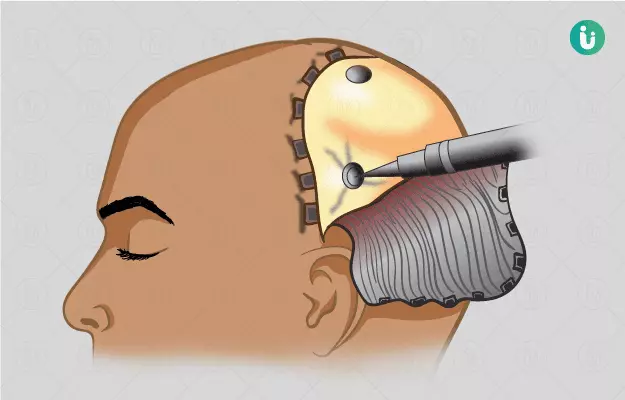Summary
A burr hole surgery is done to remove accumulated fluid/blood inside meninges (protective layers of tissues around the brain). Burr holes are small holes made in the skull. The fluid can accumulate below the dura layer, which is the outermost layer of meninges (subdural haematoma) or above the layer (epidural haematoma). This fluid accumulation causes compression of the brain tissues and puts pressure on the skull. Burr holes help to relieve this pressure on the brain.
You will need general anaesthesia before the procedure. During the procedure, a neurosurgeon will drill small holes in your skull using a special instrument to drain out the fluid. After the procedure, care needs to be taken to keep the wound clean and dry. You will be asked to avoid activities that can cause injury to your head.
Burr hole surgery can help in relieving the symptoms caused by the accumulation of blood in the skull.






































